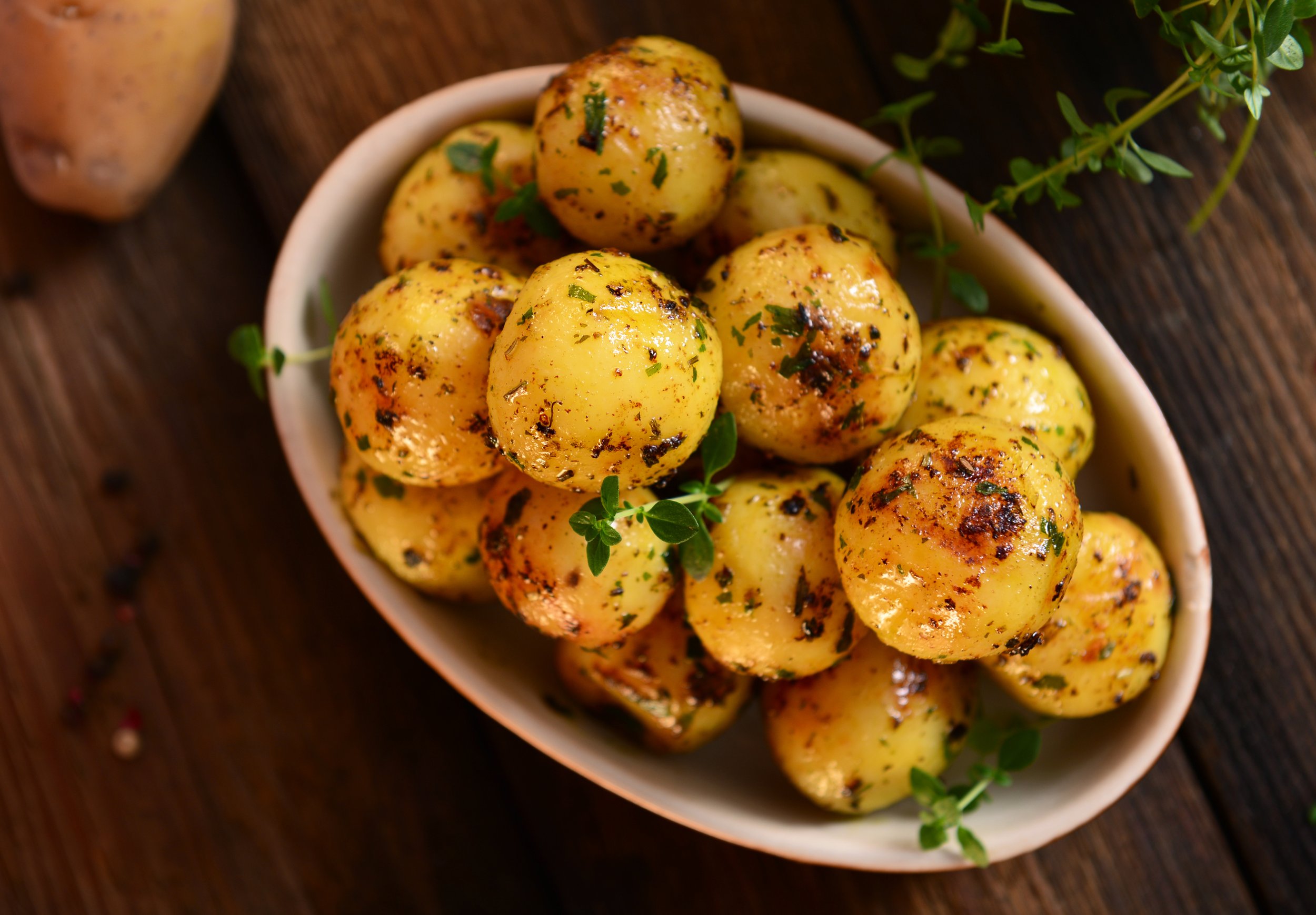Potatoes: A Beginner’s Guide To Growing and Enjoying
Why Potatoes Are the Ultimate Gardening Friend
Potatoes have a secret superpower—they’re easy to grow, incredibly versatile in the kitchen, and can turn even the smallest urban space into a productive garden. But here’s a fun fact: The humble potato was the first vegetable grown in space! That’s right—NASA successfully cultivated potatoes aboard the Space Shuttle Columbia in 1995. This tells you how easy and forgiving they can be to grow which makes them perfect for the beginner urban gardener.
This guide will help you choose the right variety, deal with common pests naturally, and grow a crop that’s as fun to dig up as it is to eat!
Choosing the Right Potato Variety
When it comes to potatoes, there’s a variety for every taste and garden setup. Here are some beginner-friendly and space-efficient options:
1. Yukon Gold
Flavor: Creamy, buttery, and perfect for mashing.
Growing Conditions: Adapts well to small spaces, so containers or small raised beds can be a nice home for Yukons.
Best Use: Soups, mashed potatoes, and roasting.
2. Red Pontiac
Flavor: Slightly sweet with a waxy texture.
Growing Conditions: It thrives in containers or garden beds with loose, well-draining soil. If you plan on planting in containers, make sure they’re at least 10-gallon (38 liter) capacity and 2’ (60 cm) tall.
Best Use: Salads, roasting, or boiling.
3. Fingerlings
Flavor: Nutty and earthy, with a firm texture.
Growing Conditions: Great for vertical gardening setups or deep pots.
Best Use: Pan-frying or roasting whole.
4. Kennebec
Flavor: Mild and starchy with a low water content, making them ideal for frying.
Growing Conditions: High-yield variety, great for slightly larger backyard setups.
Best Use: French fries or baked potatoes.
5. Russet/Idaho
Flavor: Mild earthy flavor with medium sugar content.
Growing Conditions: Does well in containers with full sun.
Best Use: Great for baking and mashing. The thick skin helps to hold in moisture and allows it to keep its shape when stuffed with goodies like shredded meat and grilled veggies.
Common Potato Pests and Natural Fixes
Potatoes are resilient, but a few pests and diseases can pop up. Here’s how to handle them using organic methods:
Pests
1. Colorado Potato Beetle
Signs: Yellow-and-black striped beetles or larvae eating leaves.
Solution:
Hand-pick beetles and larvae (great for kids who love bug-hunting!).
Create an inviting space for beneficial insects and animals, like ladybugs, stink bugs, and birds. Doing so will add diversity to your yard while they help control this pest for you.
Companion plant with marigolds or nasturtiums. These beautiful flowers repel these pests, and after, you can eat them.
2. Aphids
Signs: Tiny green bugs clustering on stems and leaves. The two most common are potato aphids (Marcosiphum euphorbiae) and green peach aphids (Myzus persicae)
Solution:
Catch them early and spray them with a shot of water.
Spray plants with a mix of water, dish soap, and a touch of vegetable oil.
Encourage ladybugs to visit your garden.
3. Wireworms
Signs: Small holes in tubers.
Solution:
Rotate crops to avoid pest buildup and harvest as early as possible because they are most active around August.
Use raw potato slices buried in the soil as traps—dig them up and remove the wireworms.
Adding beneficial nematodes to your soil could help control their population
Diseases
1. Early Blight
Signs: Brown spots on leaves, spreading outward.
Solution:
Water plants at the base to keep leaves dry.
Prune infected leaves and dispose of them (don’t compost!).
2. Potato Scab
Signs: Rough, scabby patches on tubers.
Solution:
Avoid over-fertilizing with manure.
Plant scab-resistant varieties like ‘Caribe’ or ‘Gold Rush.’
How to Grow, Care for, Harvest, and store Potatoes
1. Planting Potatoes
Choose Your Container or Garden Bed:
For containers, choose one at least 2’ (60 cm) deep with drainage holes. These can be pots, buckets, bags, etc.
In raised beds, ensure the soil is loose and rich in organic matter.
Prepare Seed Potatoes:
Buy certified seed potatoes (regular grocery potatoes may be treated to prevent sprouting). If you don’t have access to seed potatoes, purchase certified organic potatoes from the grocery store and put them in the light so eyes can develop.
Cut large seed potatoes into chunks, ensuring each piece has at least one “eye.” Let them dry for a day or two to prevent rotting.
Plant the Pieces:
In containers: Add 4” of soil, place the potato pieces with eyes facing up, and cover with 2”-3” of soil.
In garden beds: Plant 6” apart in rows, covering with 2” of soil.
2. Caring for Your Potato Plants
Watering:
Keep the soil moist but not soggy. Water deeply once a week or more often in hot weather. Overwatering root veggies can cause rot, so be careful not to.
Hilling:
As plants grow, mound soil or compost around the stems to encourage tuber development and prevent sun exposure.
Fertilizing:
Potatoes prefer low-nitrogen fertilizers. Compost tea or bone meal works well.
3. Harvesting Potatoes
When to Harvest:
For new potatoes (potatoes harvested before they mature): Harvest 2-3 weeks after the plants flower.
For mature potatoes: Wait until the vines turn yellow and die back.
How to Harvest:
For containers: Tip the container over and sift through the soil.
For garden beds: Use a garden fork to gently lift the potatoes out.
4. STORAGE
Store in a cool, dark place with ideal temperatures around 45–50°F (7–10°C). Basements and bottom cabinet shelves are perfect for this.
Use containers like burlap bags, baskets, or open boxes that will allow airflow.
Clean off excess dirt after harvesting, but don’t wash your potatoes until you are ready to use them. The additional moisture can cause bacteria to grow.
Keep your potatoes away from other produce like onions, apples, avocados, and bananas because they release ethylene gas that rots potatoes.
Nutritional Value of Potatoes
Potatoes often get a bad rap, but they’re a nutrient powerhouse when prepared right:
Rich in Vitamin C: Boosts your immune system and skin health.
High in Potassium: Helps regulate blood pressure.
A Good Source of Fiber: Supports digestive health and keeps you full longer.
Gluten-Free Energy: Potatoes are naturally gluten-free and packed with energy-boosting carbs.
Recipe
Simple and Easy: Garlic Herb Roasted Potatoes
Ingredients:
1 lb baby potatoes
2 tbsp olive oil
2 cloves garlic, minced
1 tsp rosemary or thyme
Salt and pepper to taste
Instructions:
Preheat oven to 425°F.
Toss potatoes with olive oil, garlic, herbs, salt, and pepper.
Spread on a baking sheet and roast for 25-30 minutes, flipping halfway through.
Serve as a snack or side dish—crispy on the outside, creamy on the inside!
Closing: Potatoes, Your Garden’s MVP
Potatoes are proof that good things grow underground. They’re easy to care for, fun to harvest, and ridiculously versatile in the kitchen. Whether you’re growing Yukon Golds on your balcony or Kennebecs in your backyard, potatoes are guaranteed to reward you with a delicious and satisfying crop.
So grab a container, some seed potatoes, and a sunny spot, and start your spud-growing adventure today. You might discover your green thumb—and a new appreciation for the humble potato! 🌱🥔
With Love & Gratitude,
Janet & Jennifer
Some products mentioned in our blogs have affiliate links, meaning we get paid a small amount when you make a purchase through our link. We only recommend products we have personally tried and found useful.











